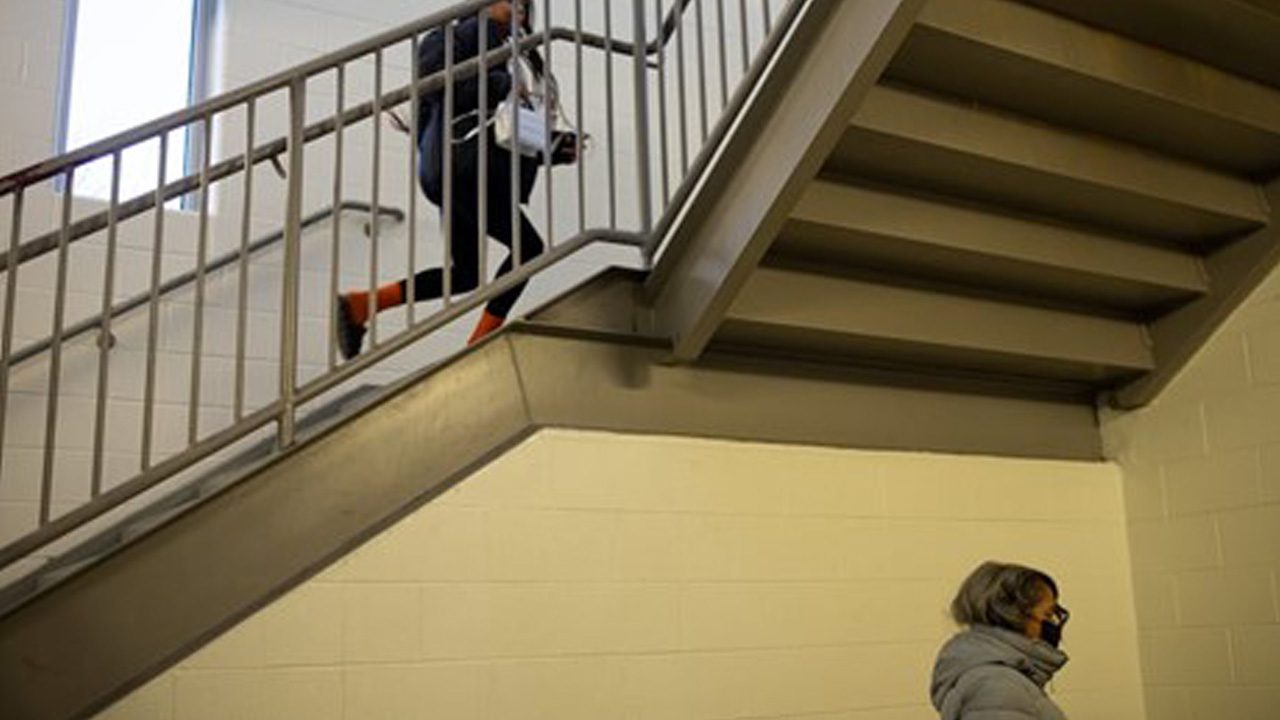
White House calls for focus on tutoring, summer school, absenteeism as pandemic aid winds down
Chalkbeat | By Kalyn Belsha and Erica Meltzer | January 17, 2024
Top White House officials are urging schools to double down on tutoring, extra learning time, and efforts to boost attendance as the spending deadline for pandemic aid nears.
To help, federal officials say states can now seek permission for schools to spend the last and largest pot of COVID relief money on these kinds of efforts over the next two school years. Previously, schools had to spend down their money by January 2025.
Education Secretary Miguel Cardona announced what the Biden administration is calling its Improving Student Achievement Agenda at a White House event Wednesday with governors and state education commissioners. The new push comes at a time when many states have yet to see math and reading scores rebound to pre-pandemic levels and many students are struggling to fill in gaps in their learning.
Federal officials said they had chosen to focus on these strategies because they are proven ways to raise student achievement.
“These three strategies have one central goal: Giving students more time and more support to succeed,” Cardona said. “We must get back to pre-pandemic levels quickly. But also let’s be clear: The bare minimum that we aspire to is to get back to what it was in 2019. 2019 data wasn’t anything to write home about.”
Though the federal government doesn’t have many tools at its disposal to encourage schools to adopt certain attendance or academic strategies, Cardona said the education department would do what it could.
That includes monitoring states to make sure they are spending federal money on evidence-based approaches to improve school performance, a job they have under federal education law. For example, federal officials could look at how states are running their tutoring programs and step in to provide guidance if the model they’re using isn’t as effective as others.
Education officials also plan to prioritize these strategies for competitive grant funding.
Why the White House wants schools to focus on tutoring and chronic absenteeism
As they did throughout the pandemic, federal officials pointed to high-dosage tutoring as a worthy investment for schools. To do that, programs should tutor students one-on-one or in groups of no more than four, for 30 minutes at least three times a week. Sessions should be scheduled during the school day and take place with a trained tutor, White House officials wrote.
Last year, some states and school districts said they had abandoned efforts to tutor kids after school, finding students often missed sessions because they lacked transportation or had schedule conflicts.
The Biden administration lifted up examples of states and districts that have invested heavily in tutoring, including Maryland, which launched a tutoring corps to focus on middle and high school math this past fall, and Washington, D.C, which is tutoring students in math and English language arts.
During the White House event, Christina Grant, D.C.’s state superintendent of education, said a key part of that investment is staffing tutoring managers in the district’s highest-need schools — a finding that’s been echoed by other tutoring programs. Those managers work like an assistant principal who can set up schedules, examine student data, and group students by ability.
“They are the ones saying, ‘No, no, you can’t go to lunch, you have to come sit here,’” Grant said. “We’re making sure that we didn’t just tell teachers and principals: ‘Hey, do this extra thing.”
Absenteeism soared during the pandemic and remains well above 2018-19 levels in most communities. When children miss school, they fall behind academically and are at greater risk of dropping out. When many students in a school frequently miss class, teachers have to decide whether to repeat material for those who missed, boring their classmates, or leave some students behind.
“We simply cannot accept chronic absenteeism as the new normal,” White House Domestic Policy Advisor Neera Tanden said. “Fortunately, we know what works: engaging parents and families as partners in their children’s education.”
She cited the example of Gompers Elementary-Middle School in northwest Detroit. Chalkbeat chronicled the school’s efforts to keep students in school, including pairing students who were starting to miss too many days with adult mentors and working closely with families.
Family and work obligations, mental health challenges, lack of transportation, and many other factors contribute to children missing too much school.
Federal officials urged schools to make specific commitments to reduce absenteeism, such as increasing calls and texts to parents, doing more home visits, and developing early warning systems. Schools should make sure communication is available in multiple languages.
States also should adopt consistent definitions of chronic absenteeism and incorporate it as a measure in their school accountability system if they haven’t done so already, officials said.
Connecticut Education Commissioner Charlene Tucker-Russell described how the state used data to identify students struggling the most — homeless students, English learners, students with disabilities — and target support. The program trained teachers and community members to do outreach and connect families with shelter, transportation, and mental health resources. An evaluation of the program found a 16% increase in attendance after home visits, Tucker-Russell said.
New Mexico Gov. Michelle Luhan Grisholm said she was “embarrassed” about her state’s sky-high rates of chronic absenteeism, including among elementary students. Working with parents is part of the solution, but schools also have to make sure students feel supported and successful so they want to be in school, she said.
“If you aren’t reading at grade level, and you can’t do math at grade level, [school] is not a place you want to be,” she said.
Federal and state officials also emphasized the importance of giving students “more time on task” — both by making sure they are attending school regularly and adding learning time.
That could mean adding time to the school day or year — a strategy many districts have struggled to pull off — or running substantial summer school programs that offer multiple hours of academic instruction per day.
Nearly half of school districts used the largest bucket of COVID relief funds to expand summer school, federal officials said, though already some have made cuts or made plans to do so.
Alabama’s state superintendent, Eric Mackey, said education officials in his state are working with lawmakers and the governor’s office to keep funding summer math and reading camps that have run for the last three years with pandemic aid. The state has provided meals, transportation, and connections to afternoon youth programming to help make it work.
“We’ve built enough momentum that our legislature said: ‘We know we can’t drop this,’” Mackey said. “We have to find a way to continue to fund it and sustain it going forward.”





